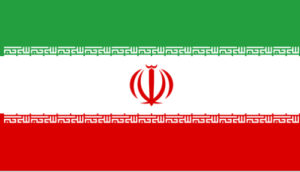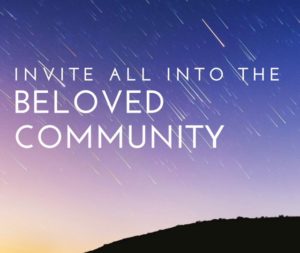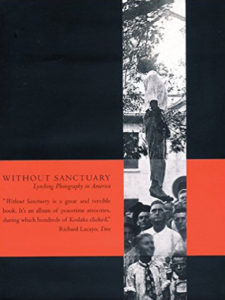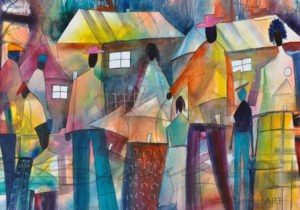Community. Local and global.
The arc of the moral universe is long, but it bends toward justice. —Martin Luther King, Jr.
President Barack Obama would often recite this quote, adding it “zig-zags”. Today, post 2016, the arc is seemingly particularly long, perhaps longer. And it is ‘zagging.’
I remember the happiness among the Iranian people after the Comprehensive Plan of Action (JCPOA), or the Iranian Deal, was signed, and the sanctions on their economy lifted. How they praised America and their feelings of future prosperity.
The United States acts as though it exists on this higher moral plane, when in reality, ethically, and compassionately, our behaviors, particularly among our government, are subpar, and so much karma to endure. Contemporaneously we live in ignorance and within a piouty weakening our collective community fiber. However, “we must not get distracted, and we must continue to do our spiritual work to embody the qualities that are seeking to emerge as we manifest the life we are called to live from the inside out. There are not shortcuts” [Sheila Thomas, RScP, Berkeley, California].
And the arc is indeed long.
The Beloved Community
By Richard Rohr
‘As Dr. Martin Luther King Jr. saw clearly in the last years of his life, we face a real choice between chaos and community—we need a moral revolution. If that was true fifty years ago, then we must be clear today: America needs a moral revival to bring about beloved community. —William J. Barber II
I believe that “moral revival” is a natural outgrowth of realizing how connected we already are: what we do unto others or to the earth, we really do to ourselves. All created beings are included in this one Body of God. Protestant pastor and political leader Rev. Dr. William Barber writes:
The main obstacle to beloved community continues to be the fear that people in power have used for generations to divide and conquer God’s children who are, whatever our differences, all in the same boat.
The goal of the spiritual journey is to discover and move toward connectedness and relationship on ever new levels, while also honoring diversity. We may begin by making connections with family and friends, with nature and animals, and then grow into deeper connectedness with those outside our immediate circle, especially people of races, religions, economic classes, gender, and sexual orientation that are different from our own. Finally, we can and will experience this full connectedness as union with God. For some it starts the other way around: they experience union with God—and then find it easy to unite with everything else.
Without connectedness and communion, we don’t exist fully as our truest selves. Becoming who we really are is a matter of learning how to become more and more deeply connected.
Inherent Goodness can always uphold you if you can trust it. It is the trusting that is important. When we fall into Primal Love, we realize that everything is foundationally okay—and we are a part of that ever.”
In a culture that honors celebrity, a reality TV culture where it appears possible to become a president, for doing nothing, this can be difficult to accept [Thomas]. We must be in alignment with Universal Law and stay vigilant to what we think, say and do. We want the law to say “yes” to the highest idea of ourselves” [Thomas].’
We have so much ugly and hurtful Karma to answer for our in this country from our behaviors and injustices that generally preceded us, and specfically live contemporaneously.
“Karma is evolutionary action, its action that has an evolutionary impact in the sense that it affects your embodiment, your life and spirit in the future. You never stay still, you go up or down in your quality” -Robert Thurman
‘Tuskegee Institute records the lynching of 3,436 blacks between 1882 and 1950. This is probably a small percentage of these murders, which were seldom reported, and led to the creation of the NAACP in 1909, an organization dedicated to passing federal anti-lynching laws. Through all this terror and carnage someone-many times a professional photographer-carried a camera and took pictures of the events. These lynching photographs were often made into postcards and sold as souvenirs to the crowds in attendance. These images are some of photography’s most brutal, surviving to this day so that we may now look back on the terrorism unleashed on America’s African-American community and perhaps know our history and ourselves better. The almost one hundred images reproduced here are a testament to the camera’s ability to make us remember what we often choose to forget [Amazon].’
NPR/Fresh Air
‘As the New Lynching Peach and Justice Memorial opens in Alabama, a look back on America’s history of racial terrorism, listening back to interviews with historian Philip Dray, author of At the Hands of Persons Unknown, and James Allen, who collected postcard “souvenirs” of lynchings for Without Sanctuary.’
‘Although fairness and. Justice are beautiful gravitates by which we as human creatures try to live with one another, the storm and the germ, the termites eating the foundation of your home, the errant stone breaking your windshield, the wave swamping your little boat—these molecules of experience do not understand what is fair. They just bombard us in the endless cosmic dance of life that just keeps happening. […] Life is not fair, but unbending in its capacity to change us; that compassion is fair and feeling is just—that we are not responsible for all that befalls us [or maybe we are] only for how we receive it and for how we hold each other up along the way.’




Leave a Reply